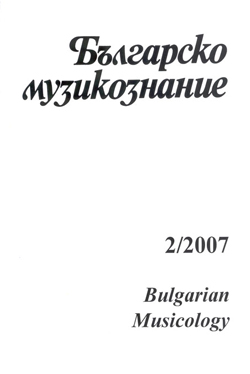Българските възрожденски песни. Проблеми на мелоса и жанра.Част I
Bulgarian National Revival Songs. Problems of Melos and Genre. Part I
Author(s): Iskra RachevaSubject(s): Music
Published by: Институт за изследване на изкуствата, Българска академия на науките
Summary/Abstract: This article examines newly-created Bulgarian National Revival songs, which can be differentiated from traditional folk songs and Orthodox liturgical chants. These songs, which include school songs, revolutionary songs, lyrical love songs, and short historical songs, were distributed between the 1840s-1870s. It is characteristic for such melodies to go beyond the confines of the traditional monodic modality and mastery of the monophonic setting of the European major musical structure (dur-moll). Three methods for creating melodies were established that followed one another diachronically: 1. The “musically inventive” method, which consisted of the singing of the text based on then current church chant formulas, which were, however, already starting to show the influence of the new European major musical structure. 2. The method of “devising a voice line,” which was connected to the direct application of existing melodies of European origin to pre-composed revolutionary, educational or romantic verse. 3. The method of “arrangement (or adaptation) in the folk style,” which was characterized by a secondary return to characteristically simplified and “established” folkloric melodic idioms in late historical and revolutionary songs from the end of the 1870s, which can be seen as the first (not necessarily deliberate) musical juxtaposition between “self” and “other.” The final method mentioned, along with the problem of revival-period genre and song modalities, will be examined in the second half of this study.
Journal: Българско музикознание
- Issue Year: 2007
- Issue No: 2
- Page Range: 5-37
- Page Count: 33
- Language: Bulgarian
- Content File-PDF

